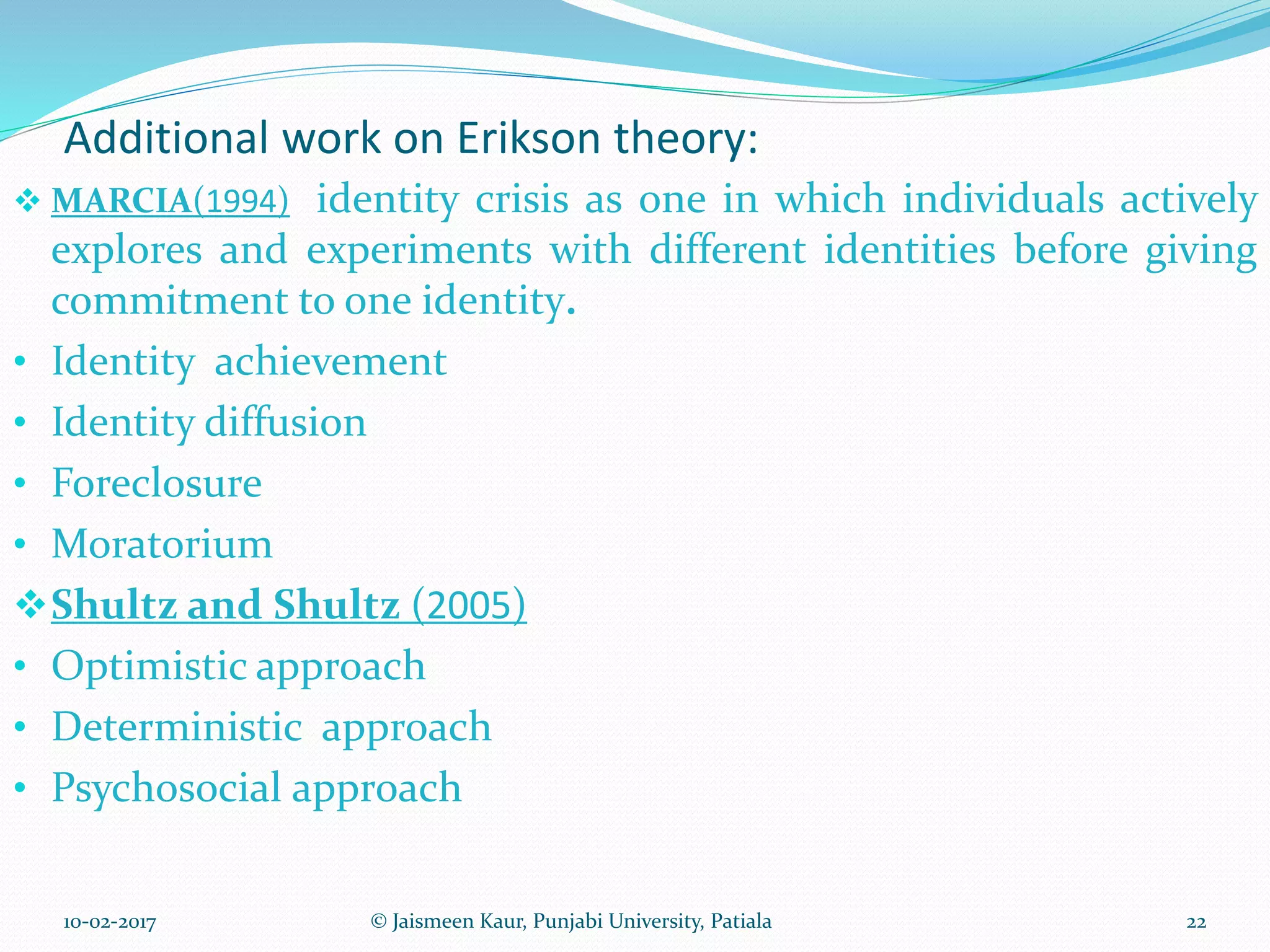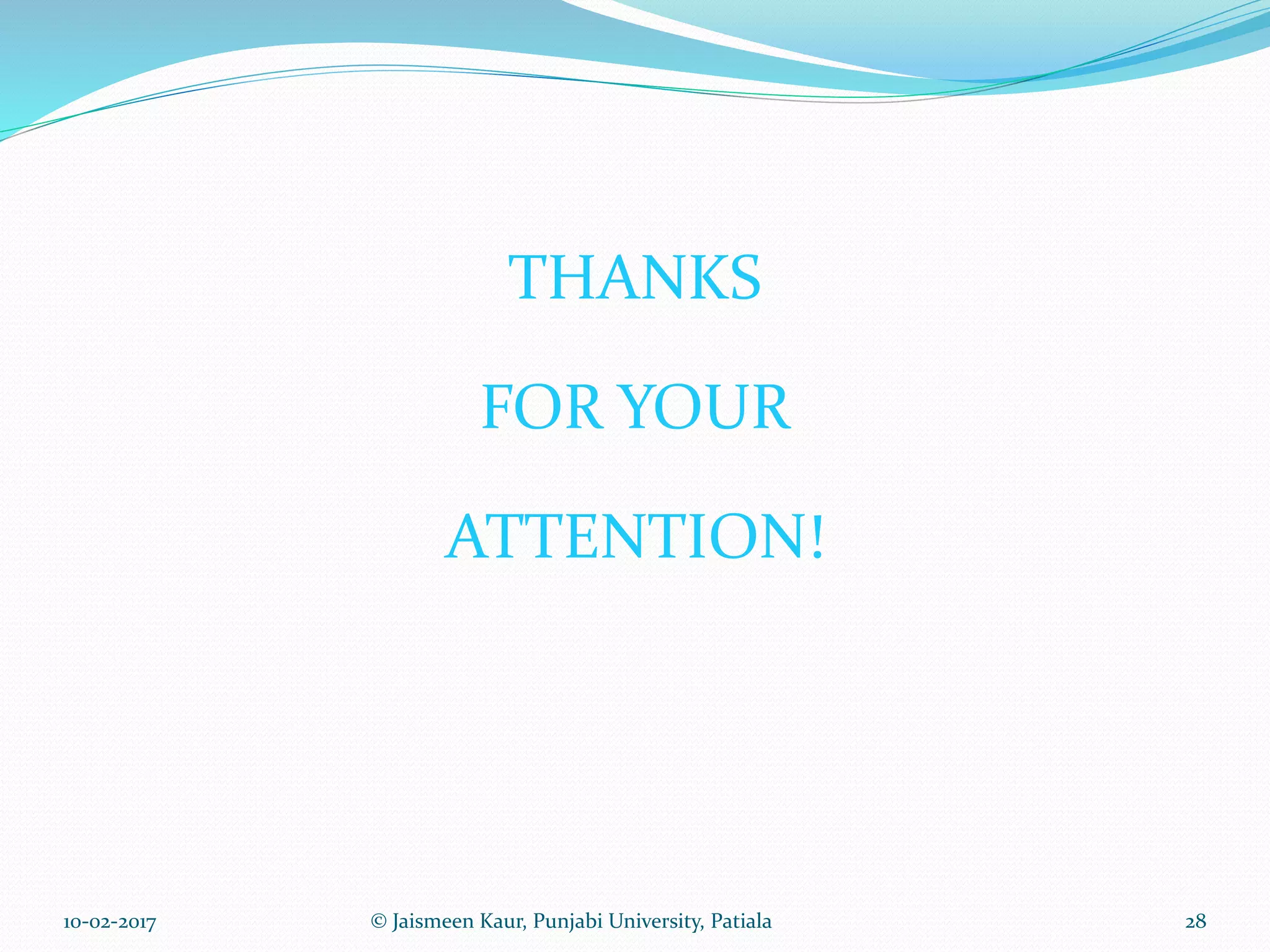This document provides an overview of Erik Erikson's psychosocial stages of development theory. It begins with biographical information about Erikson, noting he was influenced by Freud and developed his eight stages of psychosocial development based on clinical observations of children. The stages are then described in detail, from trust vs. mistrust in infancy to integrity vs. despair in late adulthood. Assessment methods for Erikson's theory and additional works expanding on it are also mentioned.




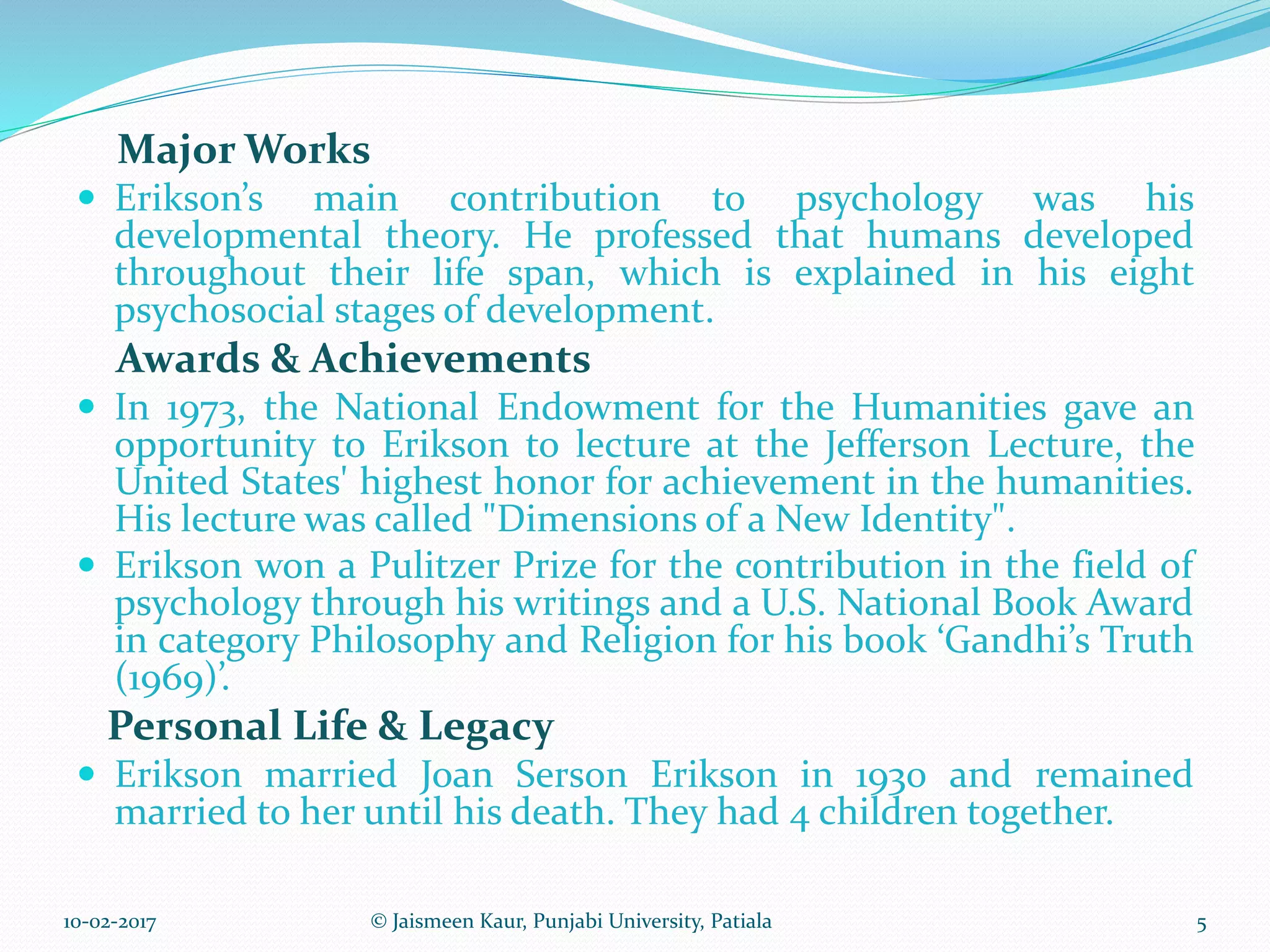


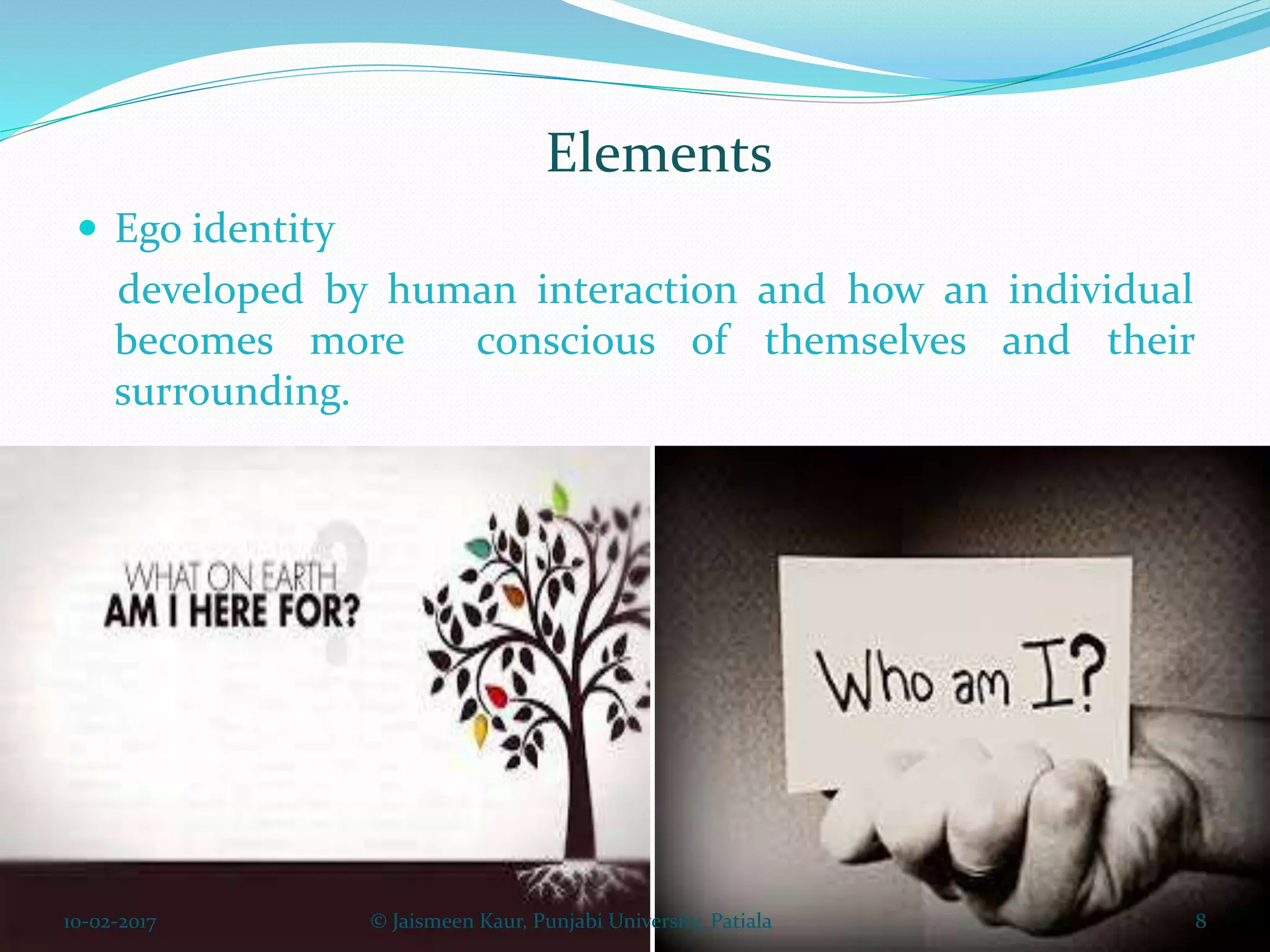
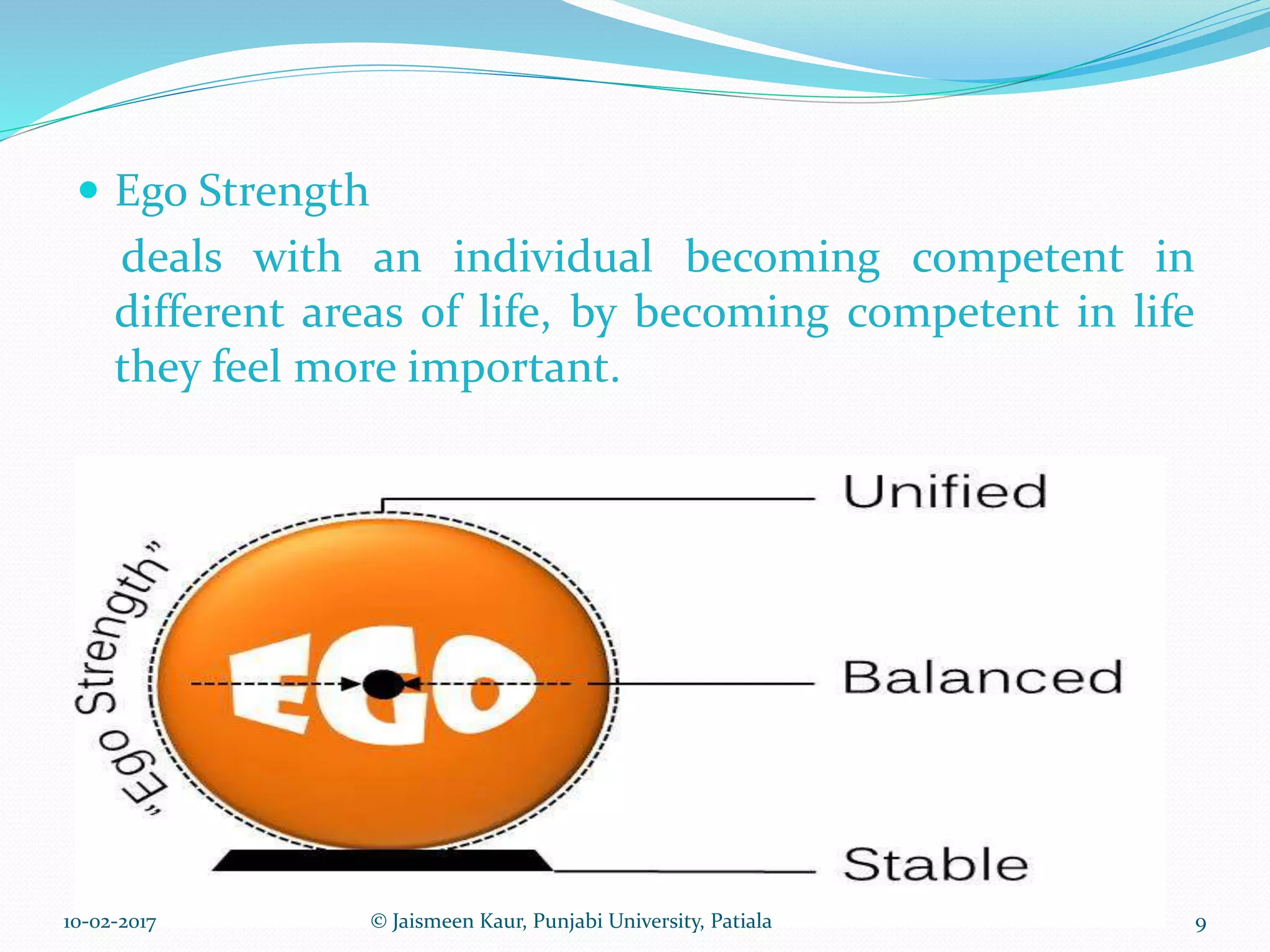

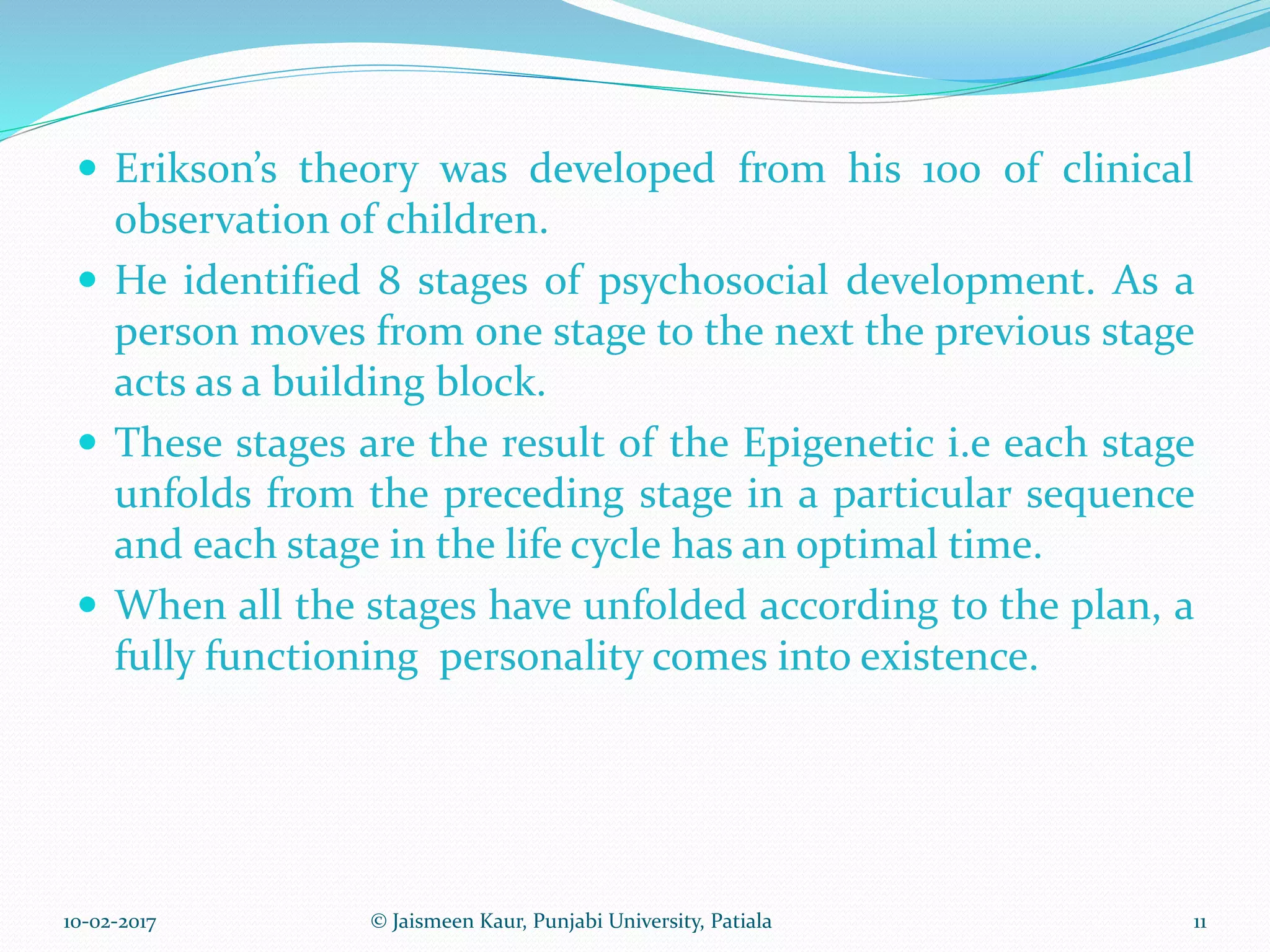



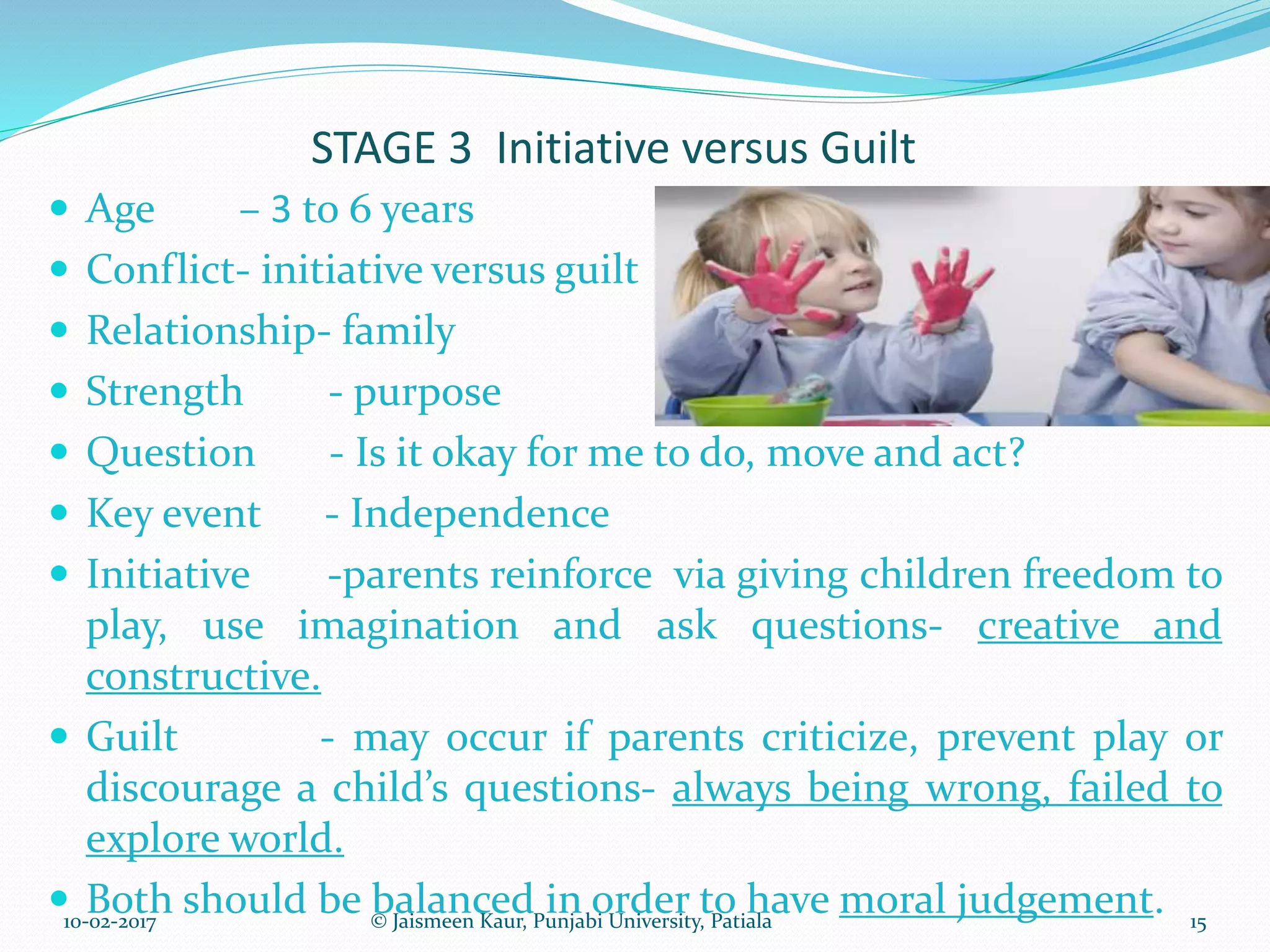
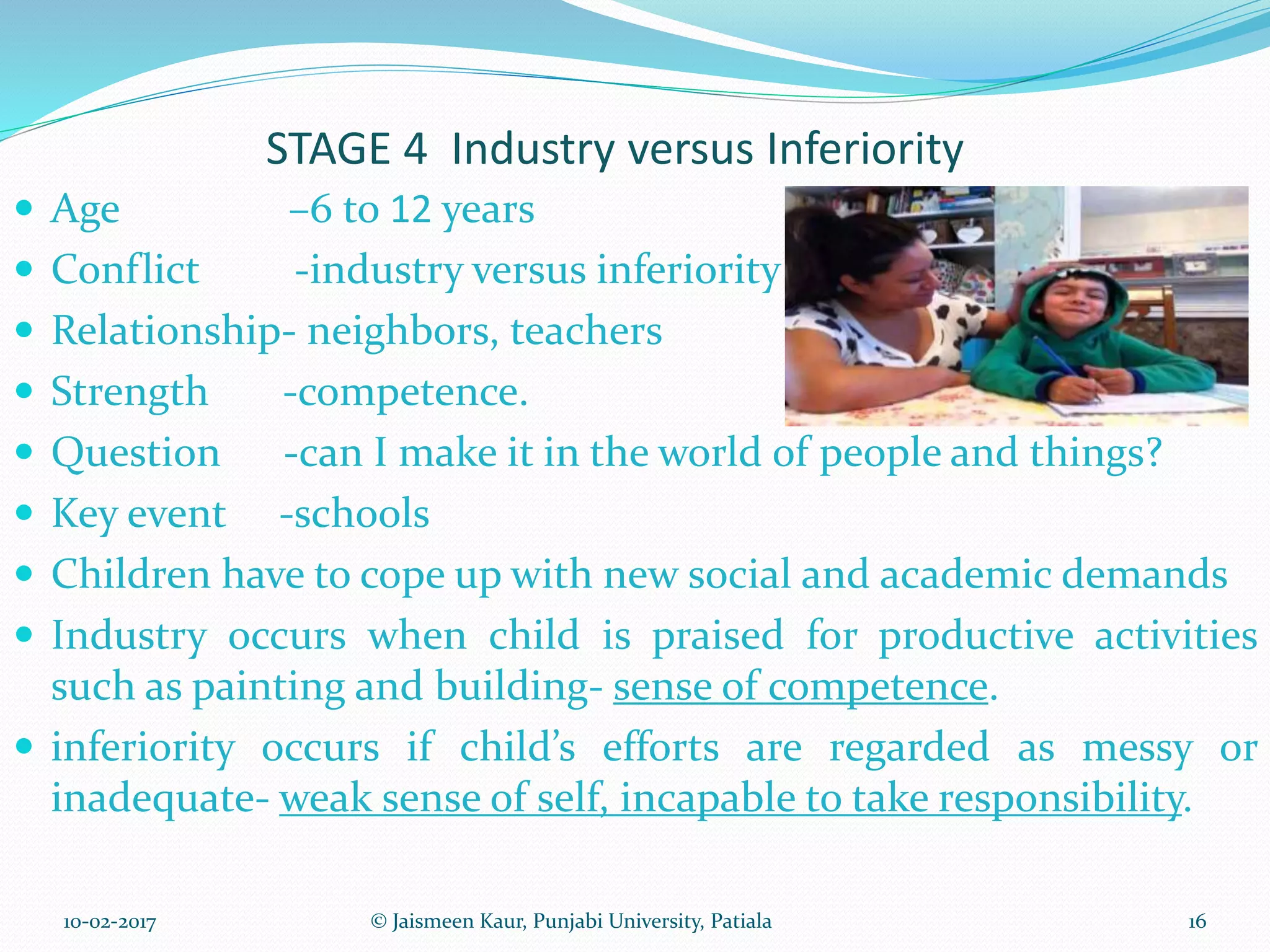
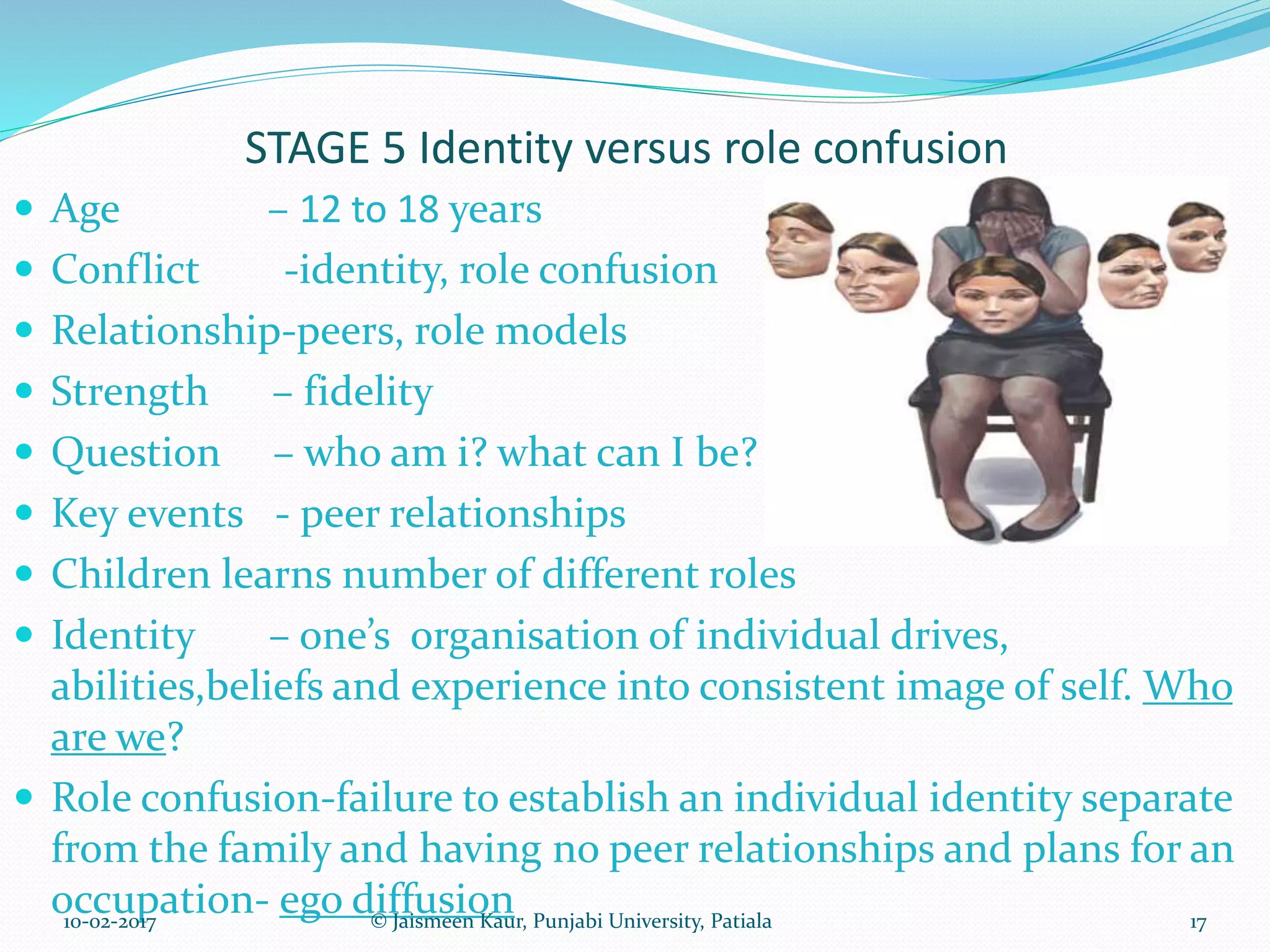
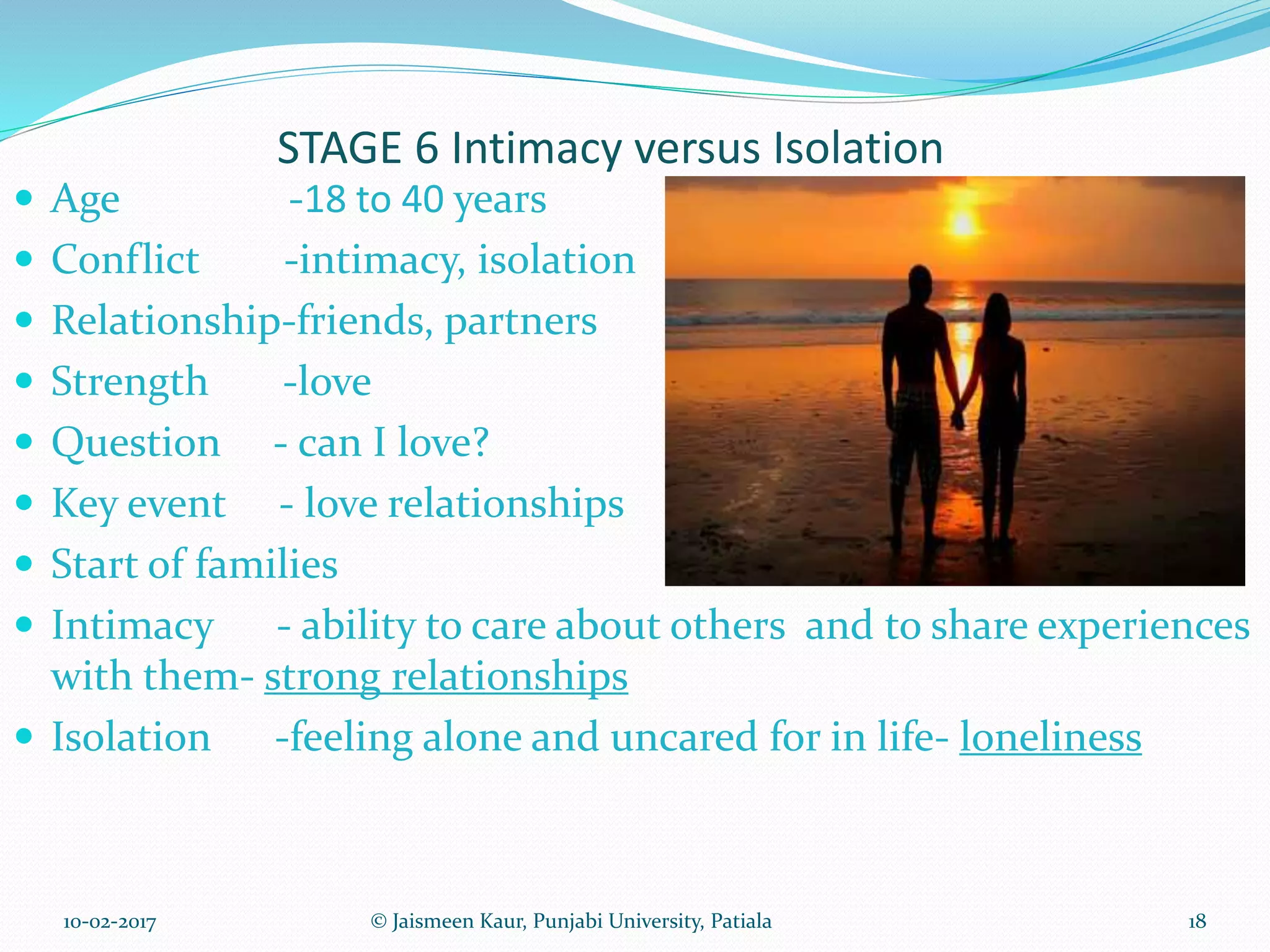
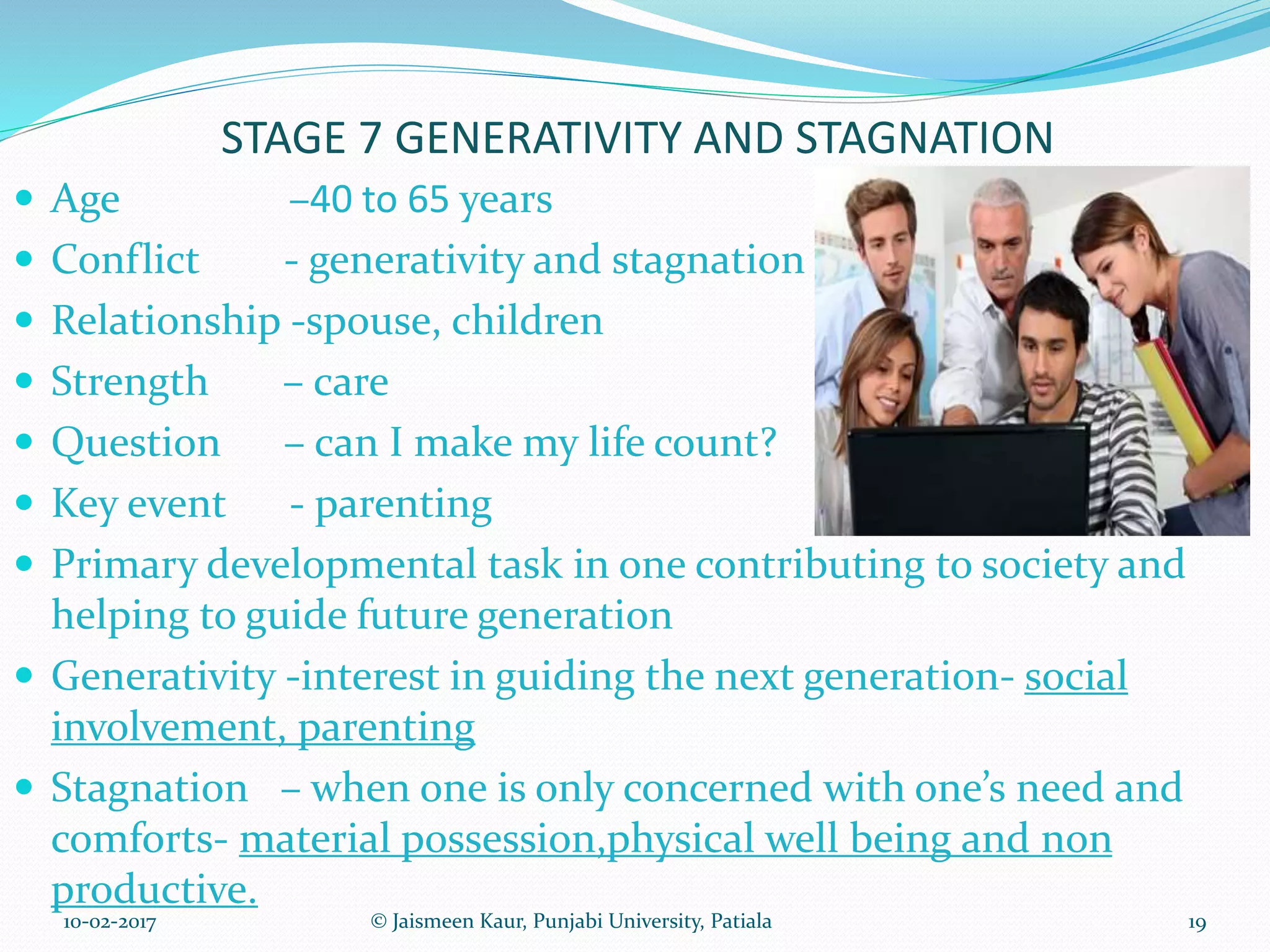
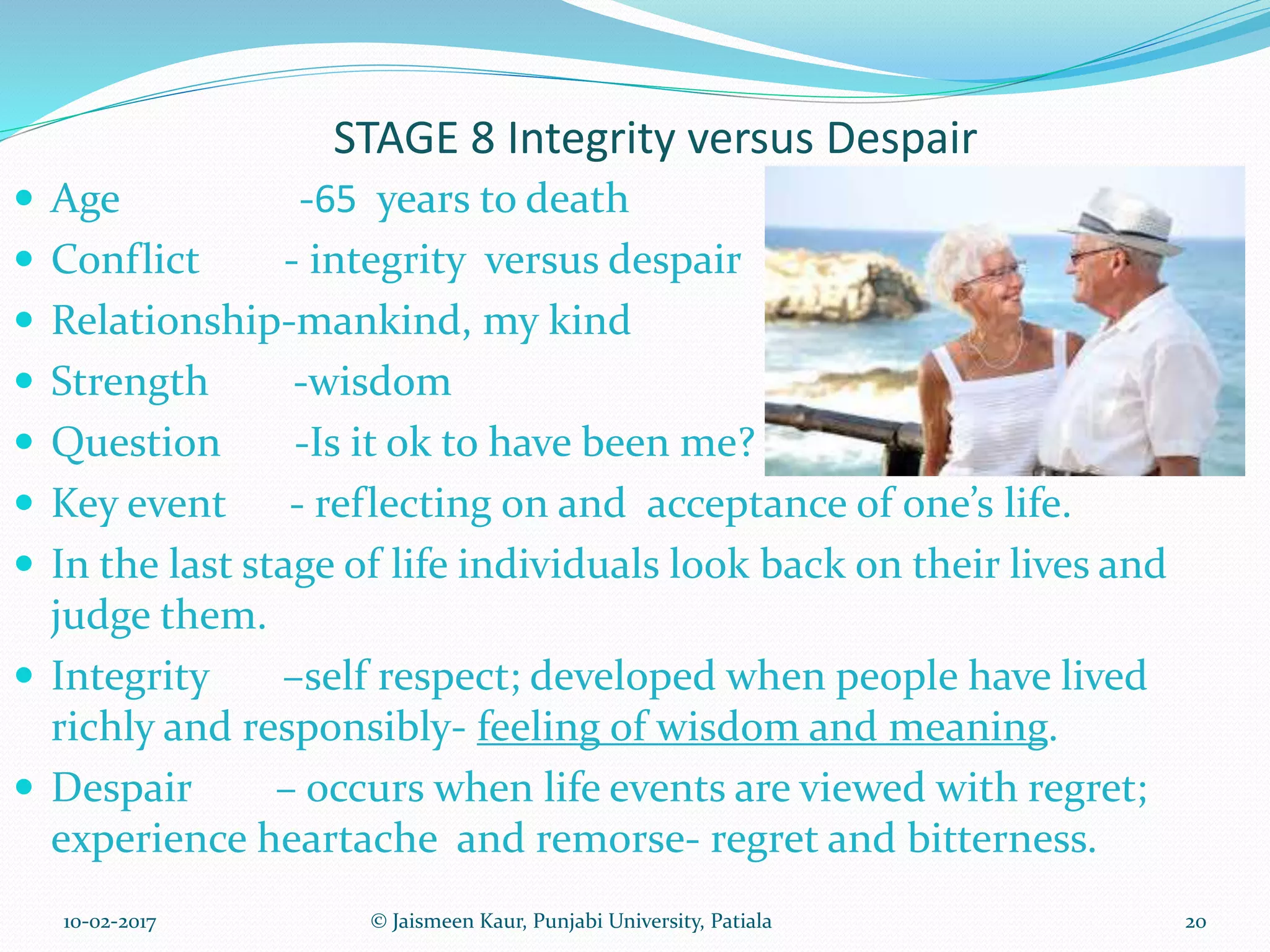
![Assessment in Erikson’s theory
Psycho historical Analysis
technique for intensive study of individuals, particularly historical
figures. Combination of psychoanalytical freudian concepts with
the method of historical study
• Psychological tests
MMPI-2 [ Multiphasic personality inventory]
PRF [ Personality research form]
• Erikson also believes in empirical data collection and analysis
10-02-2017 21© Jaismeen Kaur, Punjabi University, Patiala](https://image.slidesharecdn.com/developmentalerikson-170210180952/75/Erik-erikson-21-2048.jpg)
